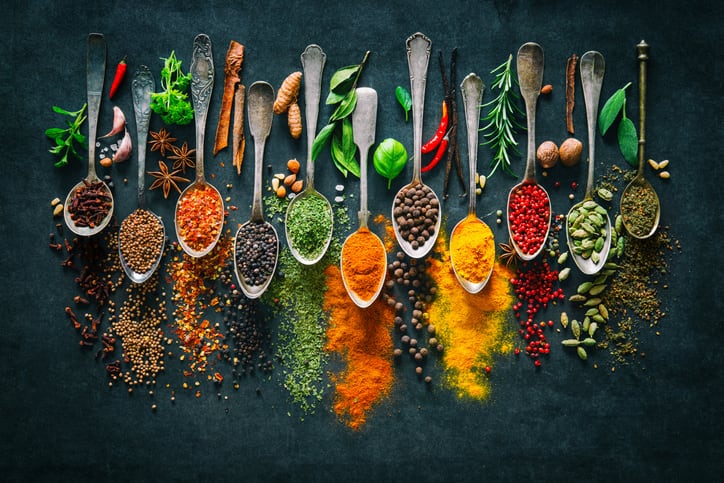Food safety concerns have been even more centred in the spotlight ever since the COVID-19 pandemic broke out, with an increasing number of consumers worried about food contamination – new data shows that in the Asia Pacific region, almost three-quarters of consumers remain fearful that the current food supply chain is not secure enough to prevent such contamination.
“Nearly three-quarters (73%) of consumers in the APAC region listed illness and deaths caused by contamination as their biggest concern for risks posed by the food supply chain,” wrote the authors of the Food Safety Supply Chain Vision Study.
“70% of consumers said it is important to know how their food and ingredients are manufactured, prepared, and handled, [and another] 69% [also want to know] how their food is sourced.”
Over 80% of consumers surveyed felt that the responsibility for ensuring food safety falls on food companies, and food supply chain transparency and traceability is fast becoming an important factor in this – a fact that many food industry players appear be aware of and already taking steps to implement.
These include New Zealand dairy giant Fonterra which opted to switch to a cloud-based strategy to boost its food safety and quality operations and even at a national level in Australia where X-ray technology is being developed to enhance traceability – but still, many consumers still appear to not yet be convinced that the food industry in APAC is at a sufficiently transparent stage.
“[Most consumers] said companies have an important role to play in implementing food safety solutions and an ethical responsibility to ensure the safe handling of their food,” said the researchers.
“However only 35% of consumers believe that the industry is already at a stage where it is prepared to manage food traceability and transparency, so [companies have more work to do in providing assurance in this area.”
In addition, governments in Asia are also expected to play a better role in ensuring a safe food supply for products that reach consumers – a separate Lloyds Register study dubbed the World Risk Poll revealed that this is expected regardless of the income levels of the countries.
For example, lower-middle income country Mongolia unsurprisingly emerged at the top of the list of Asian countries saying that the government ‘does not a good job ensuring the food bought is safe at 60%, but it was closely followed by high-income country South Korea where 44% of consumers felt the government was not performing up to par, then high-income country Taiwan at 43%.
The global average score of consumers unsatisfied with the government’s food safety initiatives stood at 30%, and other Asian countries that surpassed this dissatisfaction score included Hong Kong (40%), Vietnam (35%), Japan (32%) and Cambodia (31%).
That said, on average Lloyds Food Safety Challenge Director Dr Tim Slingsby still found that poorer countries are at higher risk of food safety related diseases and death, and urged all stakeholders in the food industry to pay closer attention to these risks.
“In general, South East Asia (22% on average) and South Asia (23% on average) are the Asian countries with the highest concerns about unsafe food, [with] many of the countries with the highest levels of worry about [being] low income economies and those experiencing severe weather events,” Dr Slingsby told FoodNavigator-Asia.
“[In Asia and beyond], strikingly the poll shows us that governments in 25% of countries are not trusted to provide basic critical infrastructure [and] only 15% of the population trust governments as their number one source of information on the safety of food and water.
“So governments, businesses and others [need to] work with communities and develop relevant and relatable policies that empower [actions to] save lives and help people feel safer.”
Contaminant worries in Asia
Both studies found top food safety-related concerns in Asia to revolve around contaminated foods and foodborne outbreaks, with Dr Slingsby citing bacteria, viruses, pesticides and chemical residues as the major contaminants of concern.
“The United Nations Food and Agriculture Organisation has shown that each year around three million people globally die from eating these tainted foods, and 600 million people a year fall ill – this not only adds to the toll of human misery on the planet but also costs the global economy hundreds of billions of dollars,” he said.
That said, some of the countries with the highest satisfaction rates in government management of food safety have also been found in Asia – the top countries for the region were unsurprisingly Singapore (93% satisfied in government’s food safety efforts), Philippines (87%), Indonesia (86%), Malaysia (78%) and China (76%).
“In Asia we see that the proportion of people very worried about their food is relatively low compared with other parts of the world, especially compared to regions like South Africa and Latin America [but we still call on] businesses, governments and other entities [to work together to improve on these results],” said Dr Slingsby.
Study 1: Food Safety Supply Chain Vision Study
Source 1: Zebra
Study 2: World Risk Poll
Source 2: Lloyd’s Register Foundation
https://wrp.lrfoundation.org.uk/data-resources/a-world-of-risk-country-overviews/





